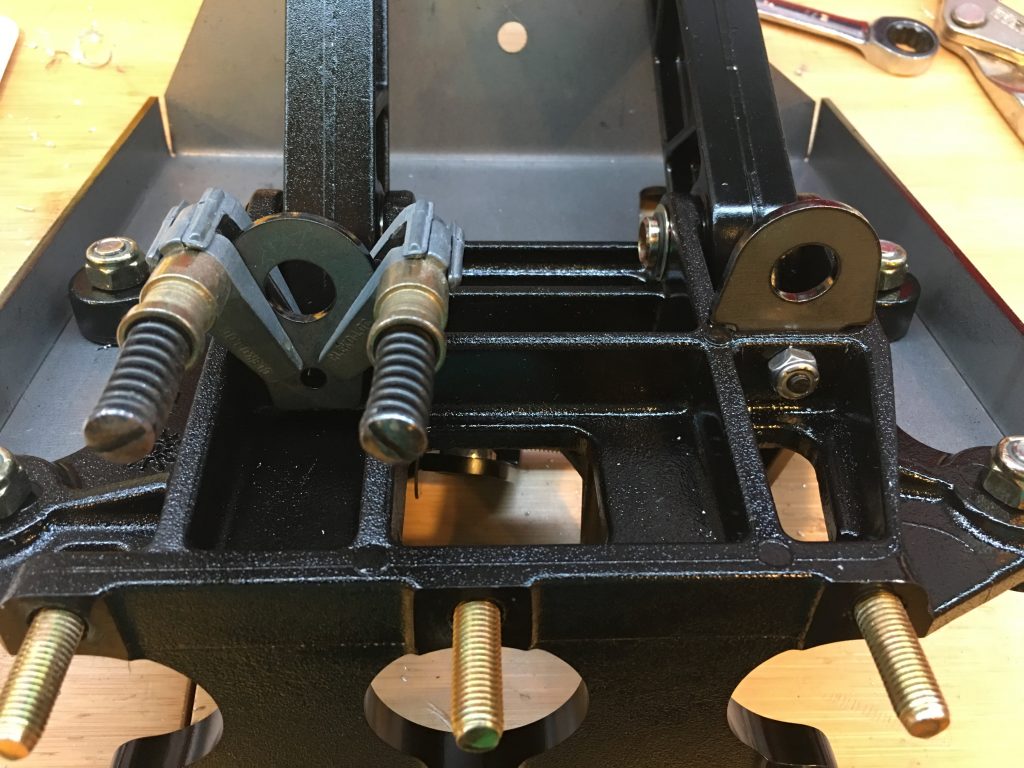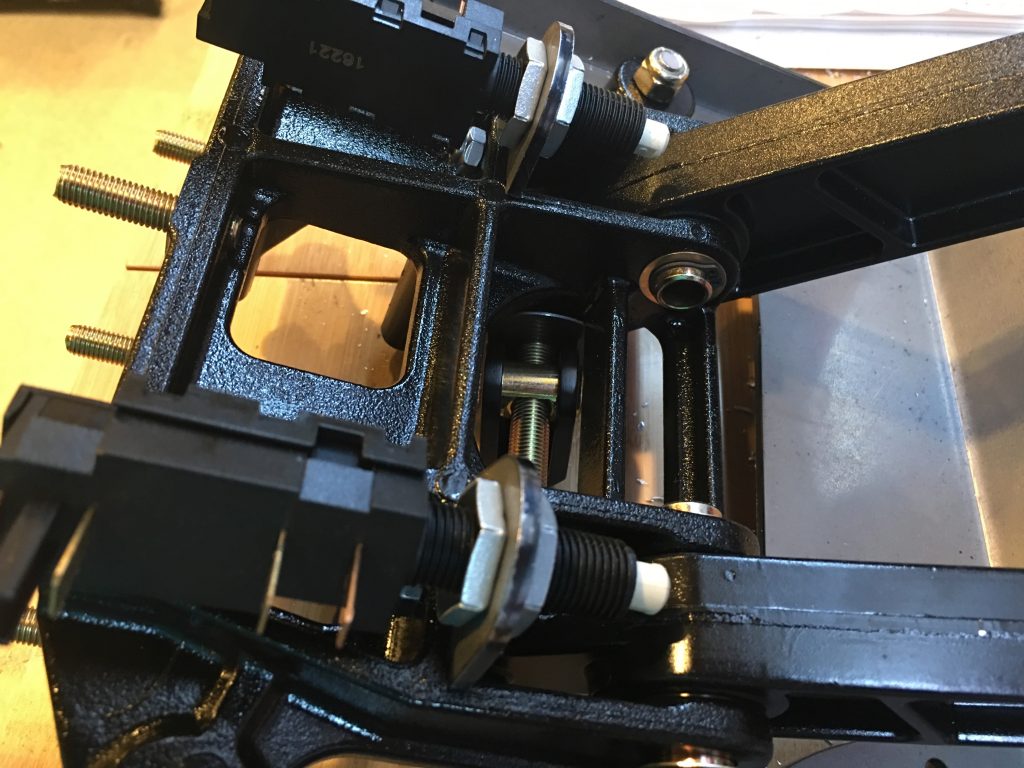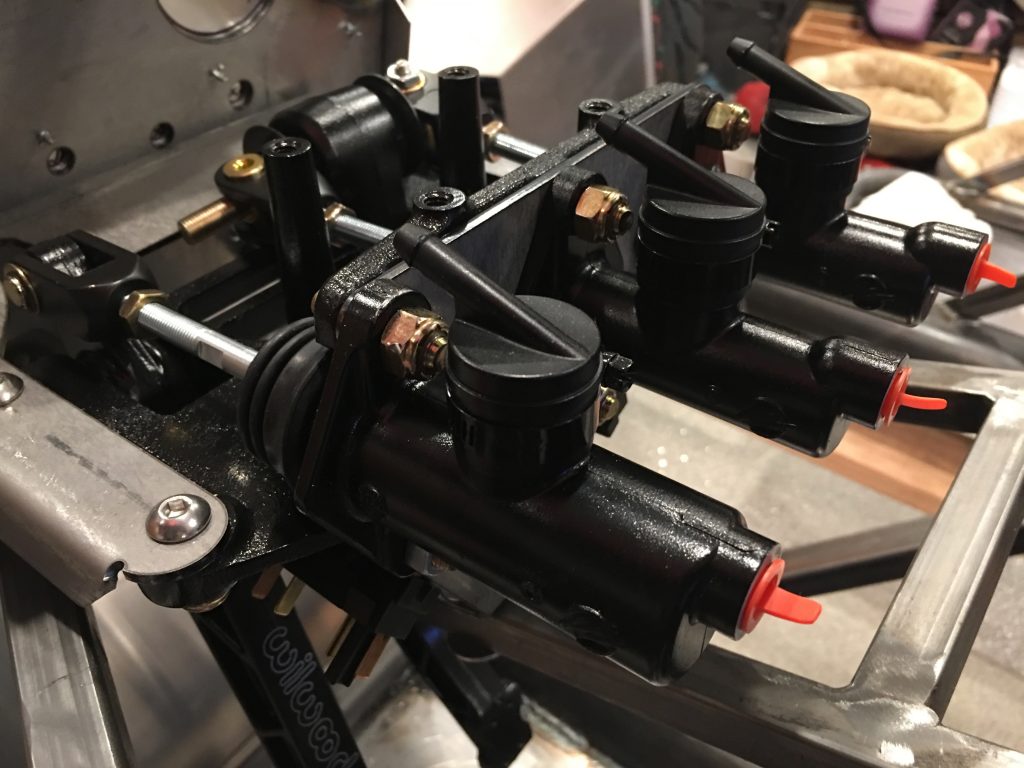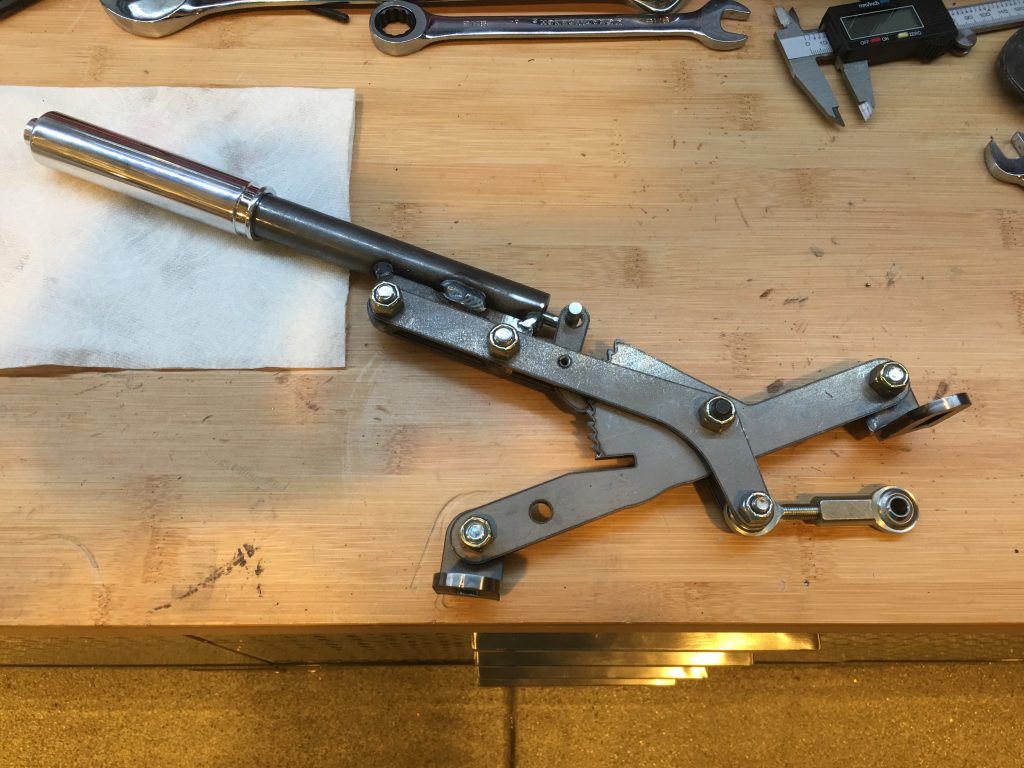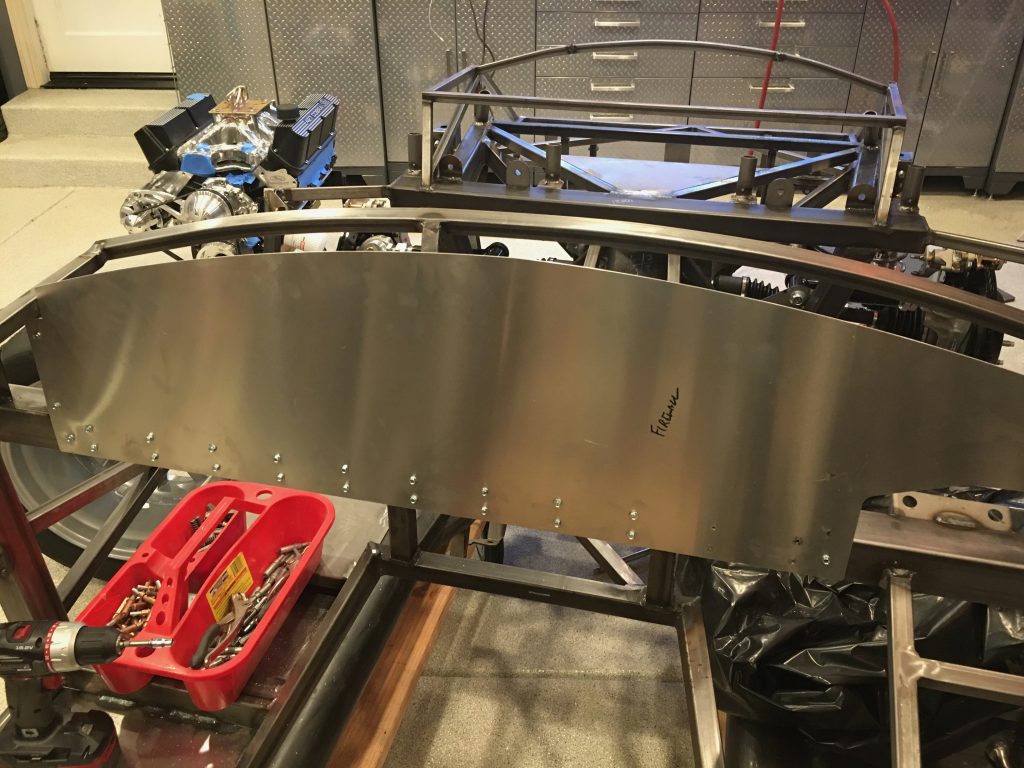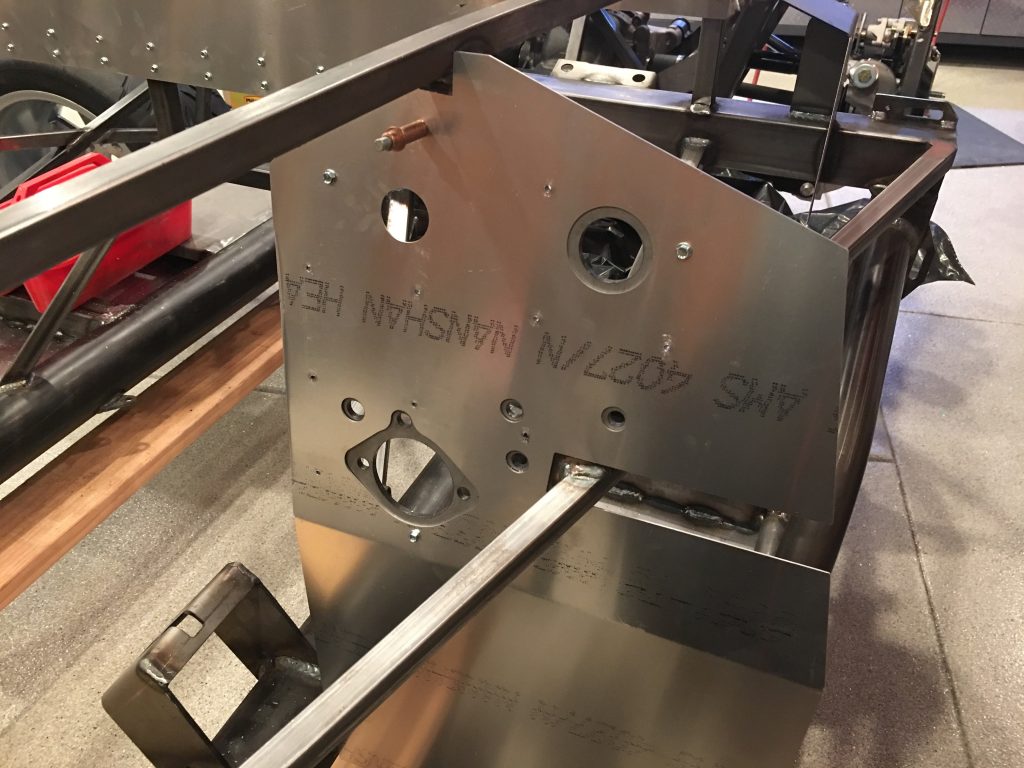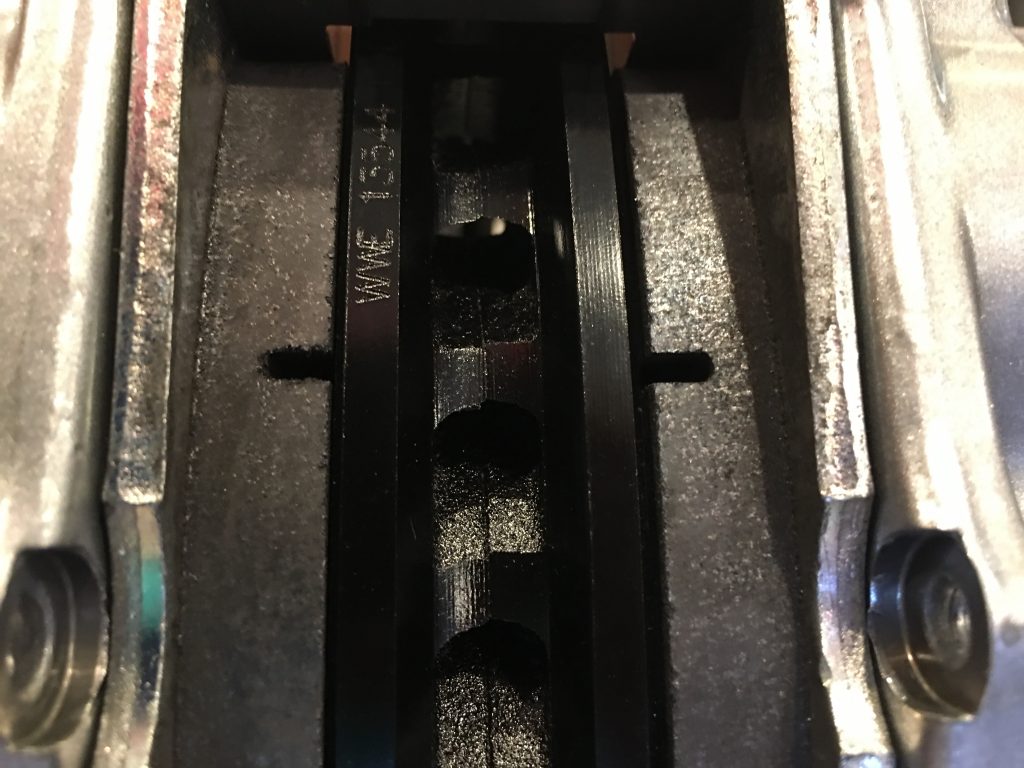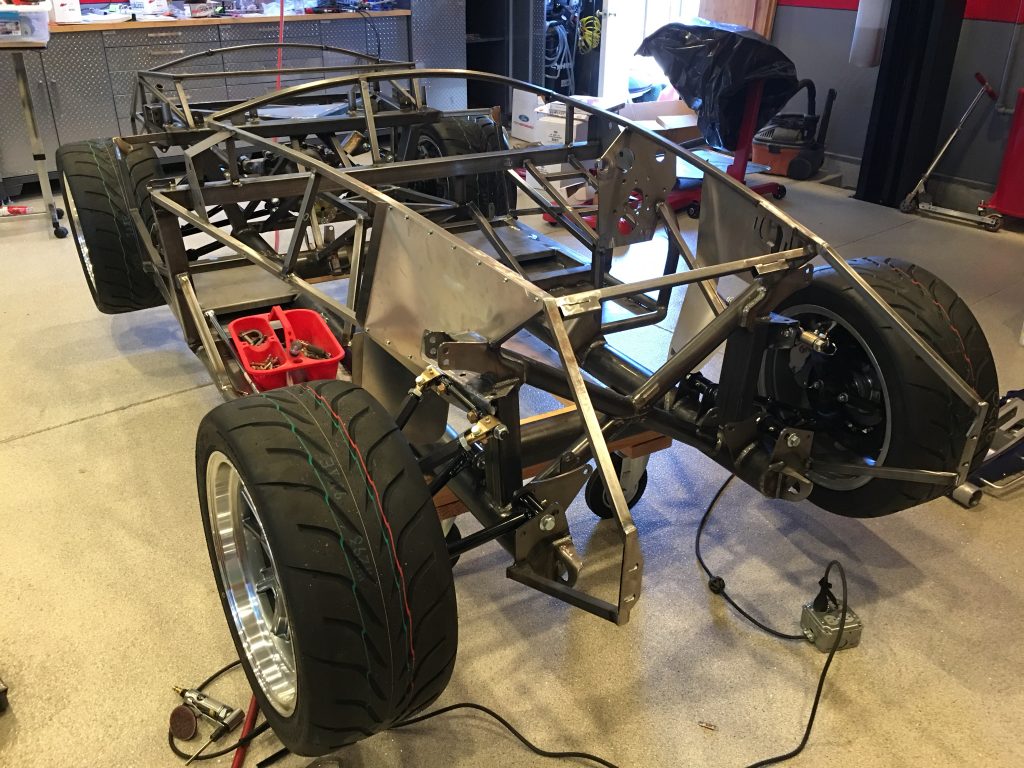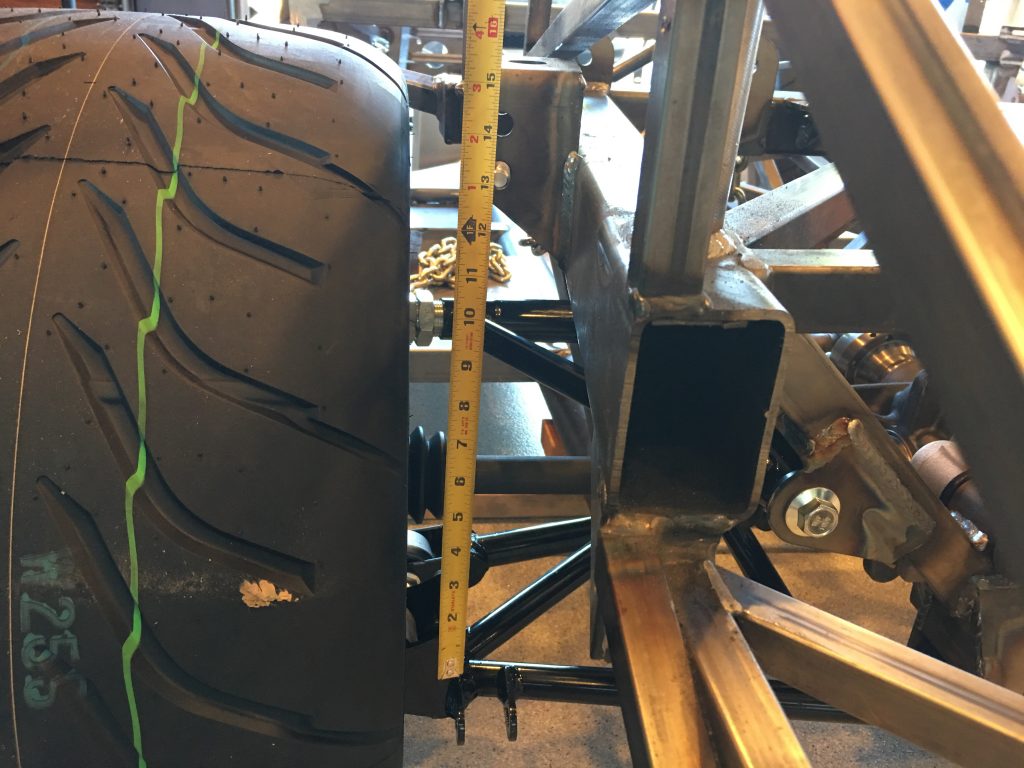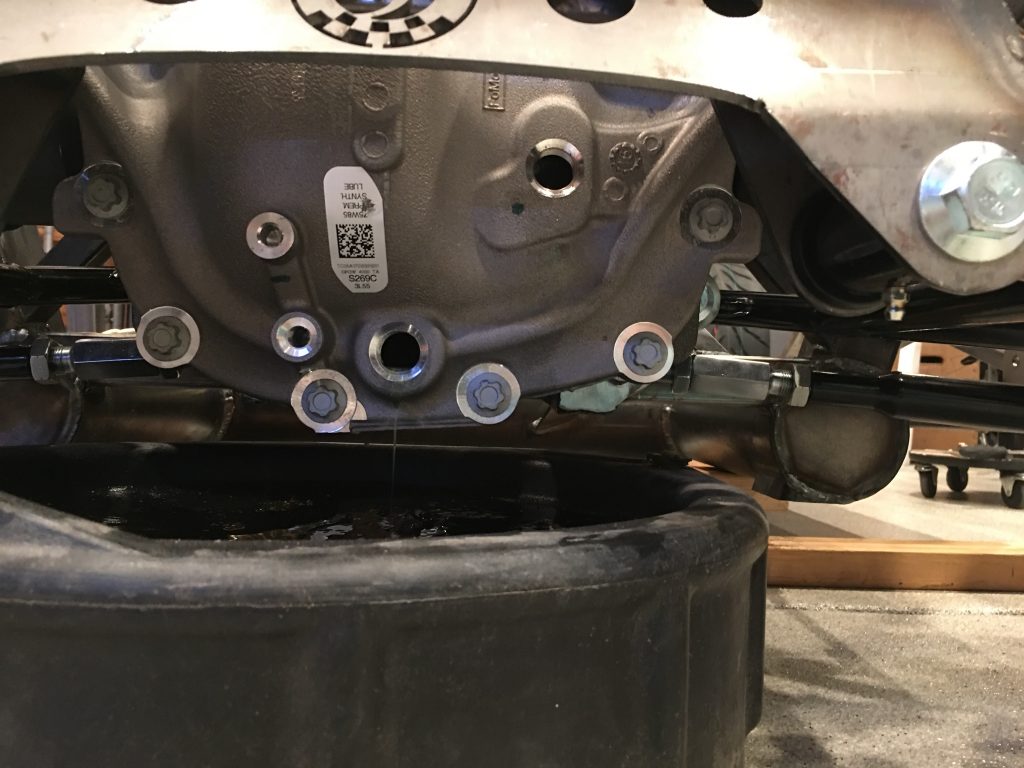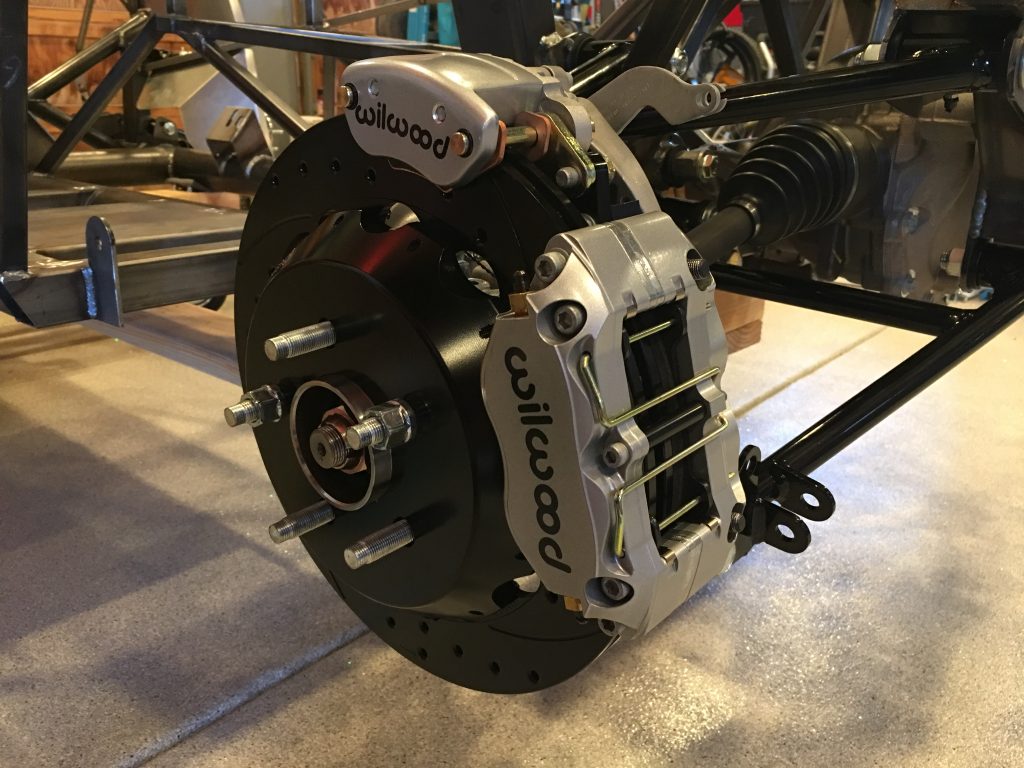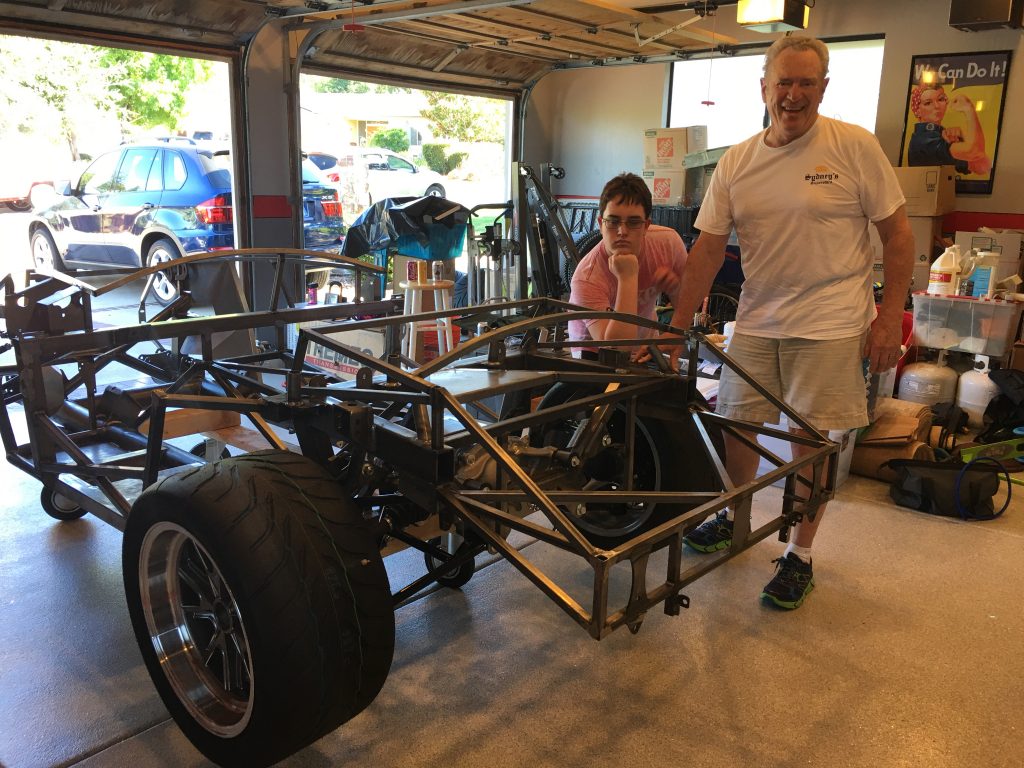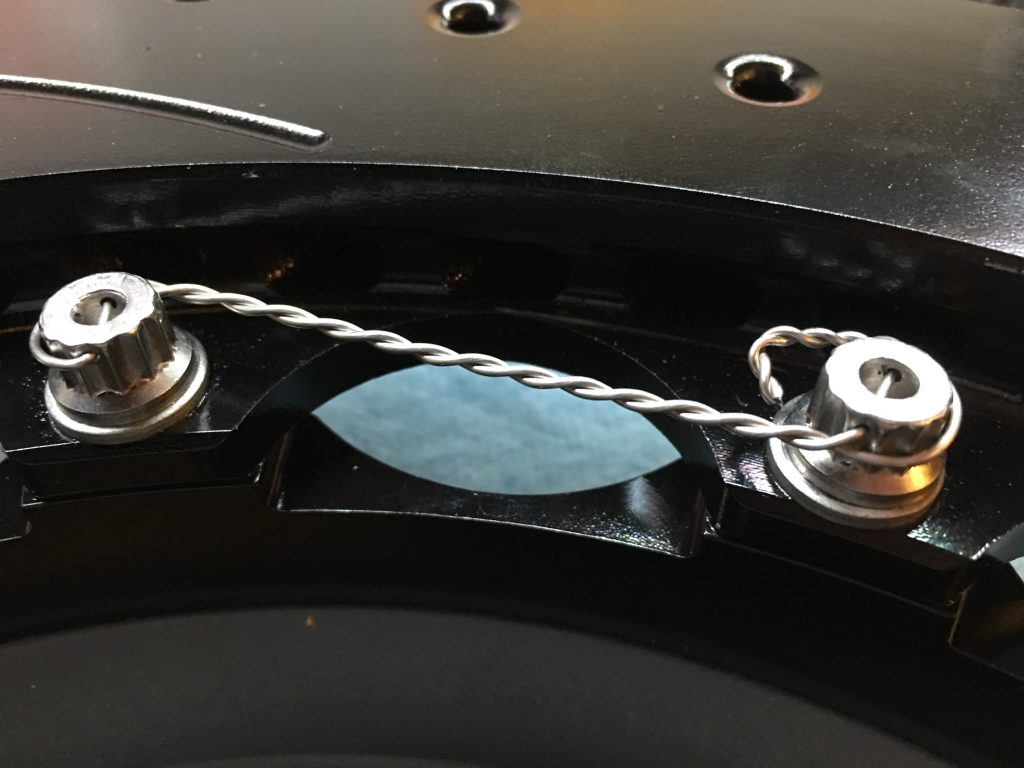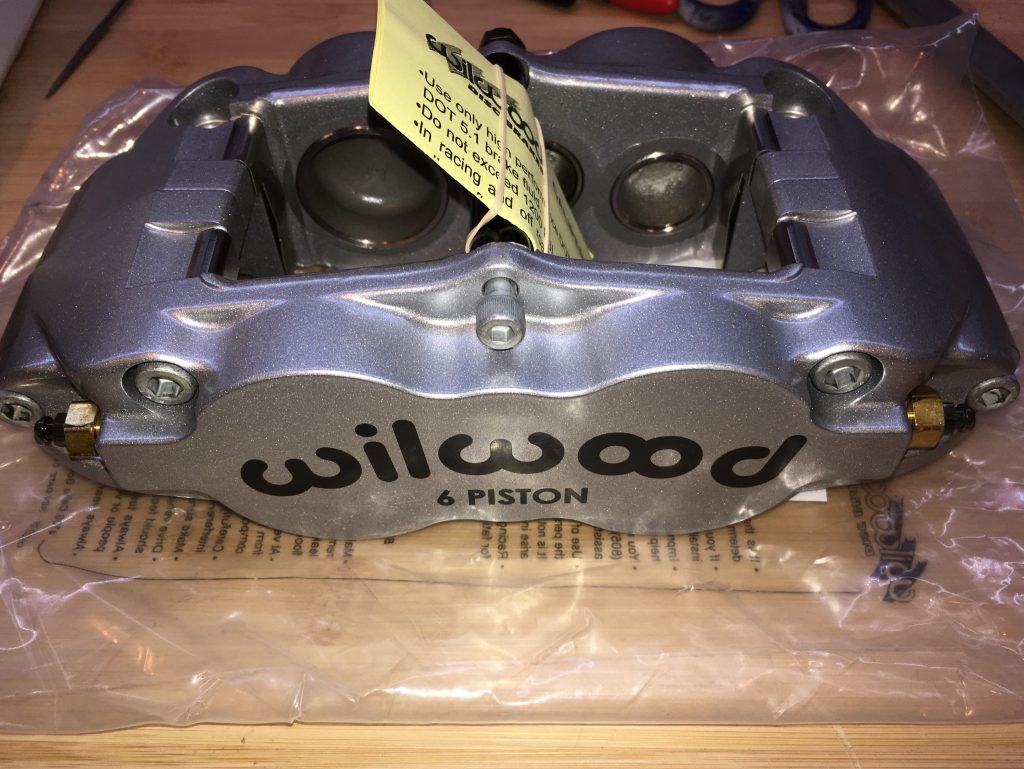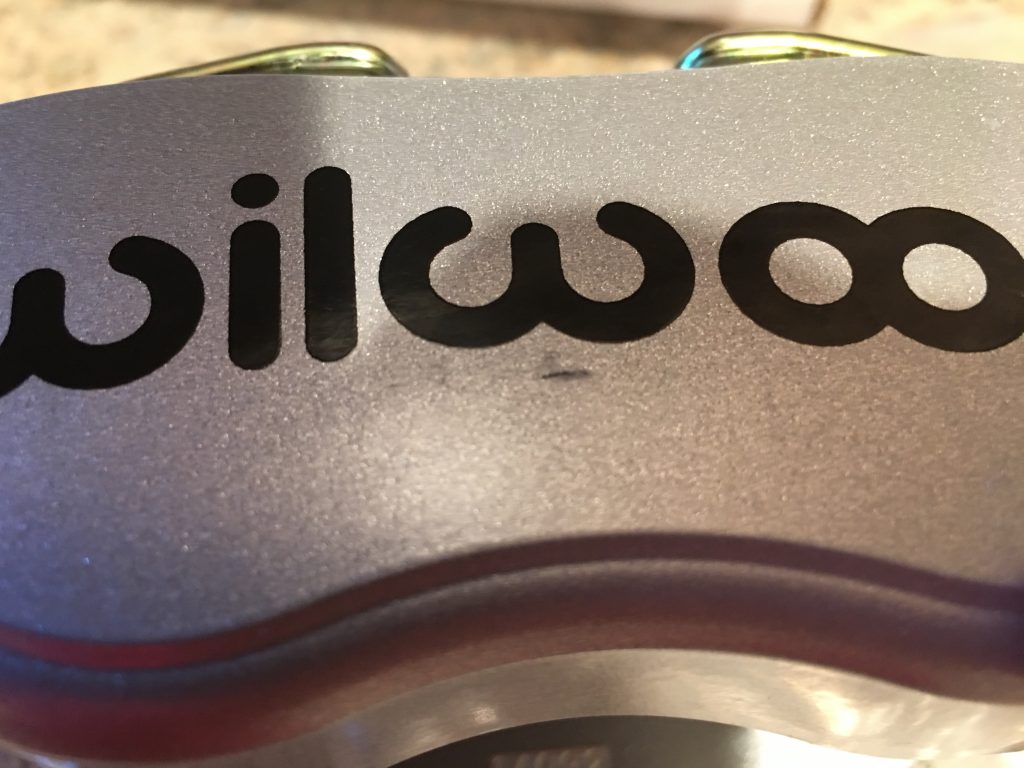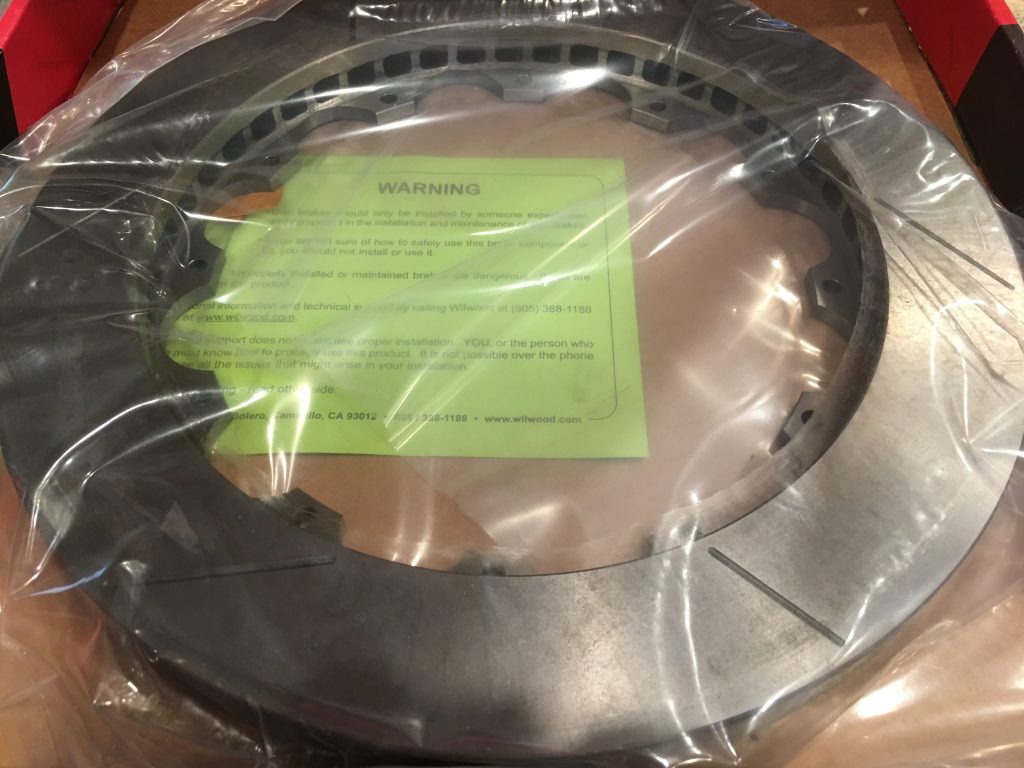Jenn’s been sick since we got back from vacation. She’s disappointed to not be able to work on the car, but she wants to see some progress, so she’s been fine with me working on the car alone the last few days.
Next up is to install the pedal box. The complete kit comes with the Wilwood pedal box that contains the brake and clutch pedals. The brake pedal is set up to depress two master cylinders (one for the front brakes and one for the rear). The clutch pedal can use a master cylinder for those (like us) who are using a hydraulic clutch, or it can be configured to use a clutch cable for those running a manual clutch.
Both the clutch and brake pedals have switches installed so that systems can know when they’re depressed. The switches are mounted to tabs that need to be installed on the pedal box. To drill the holes, I clamped the tabs to the opposite side of the mounting flange since there is no room to drill from the other side. If you do this, don’t push the tab all the way down against the adjacent side flanges since they slope up toward the pedal and the hole won’t be aligned when you move the tab to the other side of the mounting flange. I just eyeballed it and it worked out great. You can see the right tab is already mounted and the left is ready to be drilled.
Once the tabs are in place, the switches can be installed. I’ll adjust the offset for these once all the systems are hooked up.
When I tried to install the pedal box in the car, two of the screws that I installed yesterday interfered. I removed them, installed the pedal box and then drilled through this flange. After removing the pedal box, I enlarged these holes to provide clearance for the screws (and eventually the rivet shop heads).
After fitting the rear mounting plate, I marked and drilled holes through the lower 3/4″ square tubing. Initially, they landed almost flush with the edge of the tubing. I couldn’t drill the holes there since that would compromise the side of the tubing. I ended up shifting the holes over about 1/16″. There is enough flex in all of the components that they can absorb some offset. You just need to make sure all of the bolts are installed loosely before tightening everything down.
You can see that the clutch reservoir (closest in the picture) has a larger bore than the brake cylinders. After installing everything, I realized that the brake balance bar was misadjusted from the factory. I ended up removing one of the brake cylinders so that I could adjust the side-to-side clearance of the balance bar. After adjusting the balance bar, I threaded in the master cylinder shafts until the cylinders open all the way up when the pedals are released.

